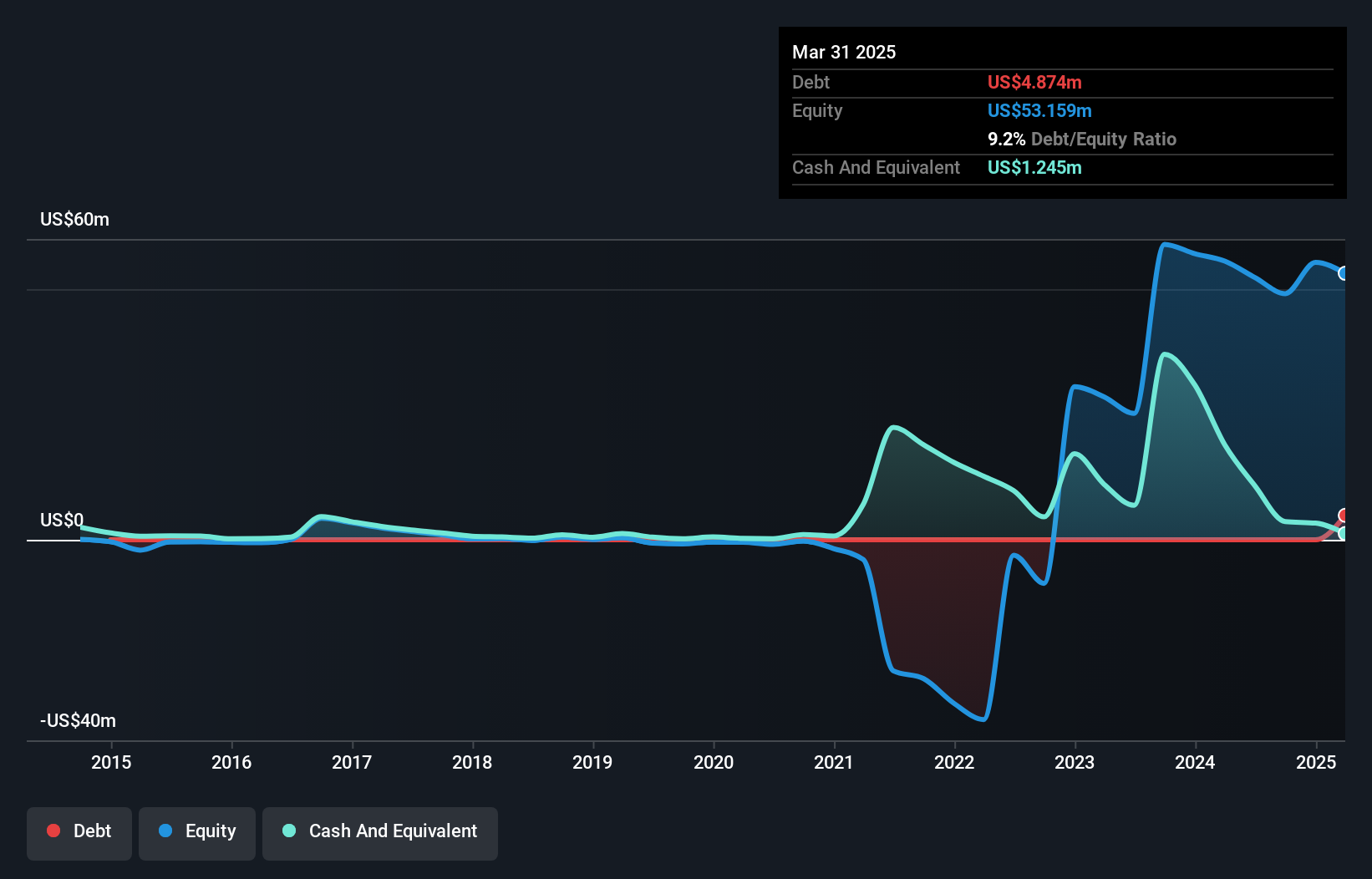
The external fund manager backed by Berkshire Hathaway's Charlie Munger, Li Lu, makes no bones about it when he says 'The biggest investment risk is not the volatility of prices, but whether you will suffer a permanent loss of capital.' It's only natural to consider a company's balance sheet when you examine how risky it is, since debt is often involved when a business collapses. Importantly, NextSource Materials Inc. (TSE:NEXT) does carry debt. But the real question is whether this debt is making the company risky.
Why Does Debt Bring Risk?
Debt assists a business until the business has trouble paying it off, either with new capital or with free cash flow. If things get really bad, the lenders can take control of the business. However, a more usual (but still expensive) situation is where a company must dilute shareholders at a cheap share price simply to get debt under control. Having said that, the most common situation is where a company manages its debt reasonably well - and to its own advantage. When we think about a company's use of debt, we first look at cash and debt together.
What Is NextSource Materials's Debt?
You can click the graphic below for the historical numbers, but it shows that as of March 2025 NextSource Materials had US$4.87m of debt, an increase on none, over one year. On the flip side, it has US$1.24m in cash leading to net debt of about US$3.63m.

How Healthy Is NextSource Materials' Balance Sheet?
We can see from the most recent balance sheet that NextSource Materials had liabilities of US$15.8m falling due within a year, and liabilities of US$30.4m due beyond that. Offsetting this, it had US$1.24m in cash and US$830.8k in receivables that were due within 12 months. So its liabilities outweigh the sum of its cash and (near-term) receivables by US$44.1m.
This deficit is considerable relative to its market capitalization of US$64.1m, so it does suggest shareholders should keep an eye on NextSource Materials' use of debt. This suggests shareholders would be heavily diluted if the company needed to shore up its balance sheet in a hurry. When analysing debt levels, the balance sheet is the obvious place to start. But it is NextSource Materials's earnings that will influence how the balance sheet holds up in the future. So when considering debt, it's definitely worth looking at the earnings trend. Click here for an interactive snapshot.
Check out our latest analysis for NextSource Materials
Since NextSource Materials has no significant operating revenue, shareholders probably hope it will develop a valuable new mine before too long.
Caveat Emptor
Over the last twelve months NextSource Materials produced an earnings before interest and tax (EBIT) loss. Indeed, it lost a very considerable US$10m at the EBIT level. When we look at that and recall the liabilities on its balance sheet, relative to cash, it seems unwise to us for the company to have any debt. Quite frankly we think the balance sheet is far from match-fit, although it could be improved with time. However, it doesn't help that it burned through US$29m of cash over the last year. So in short it's a really risky stock. The balance sheet is clearly the area to focus on when you are analysing debt. But ultimately, every company can contain risks that exist outside of the balance sheet. These risks can be hard to spot. Every company has them, and we've spotted 5 warning signs for NextSource Materials (of which 3 are potentially serious!) you should know about.
If, after all that, you're more interested in a fast growing company with a rock-solid balance sheet, then check out our list of net cash growth stocks without delay.
Valuation is complex, but we're here to simplify it.
Discover if NextSource Materials might be undervalued or overvalued with our detailed analysis, featuring fair value estimates, potential risks, dividends, insider trades, and its financial condition.
Access Free AnalysisHave feedback on this article? Concerned about the content? Get in touch with us directly. Alternatively, email editorial-team (at) simplywallst.com.
This article by Simply Wall St is general in nature. We provide commentary based on historical data and analyst forecasts only using an unbiased methodology and our articles are not intended to be financial advice. It does not constitute a recommendation to buy or sell any stock, and does not take account of your objectives, or your financial situation. We aim to bring you long-term focused analysis driven by fundamental data. Note that our analysis may not factor in the latest price-sensitive company announcements or qualitative material. Simply Wall St has no position in any stocks mentioned.
About TSX:NEXT
NextSource Materials
Explores for, develops, and evaluates mineral properties in Madagascar and Canada.
Moderate and slightly overvalued.
Similar Companies
Market Insights
Community Narratives





